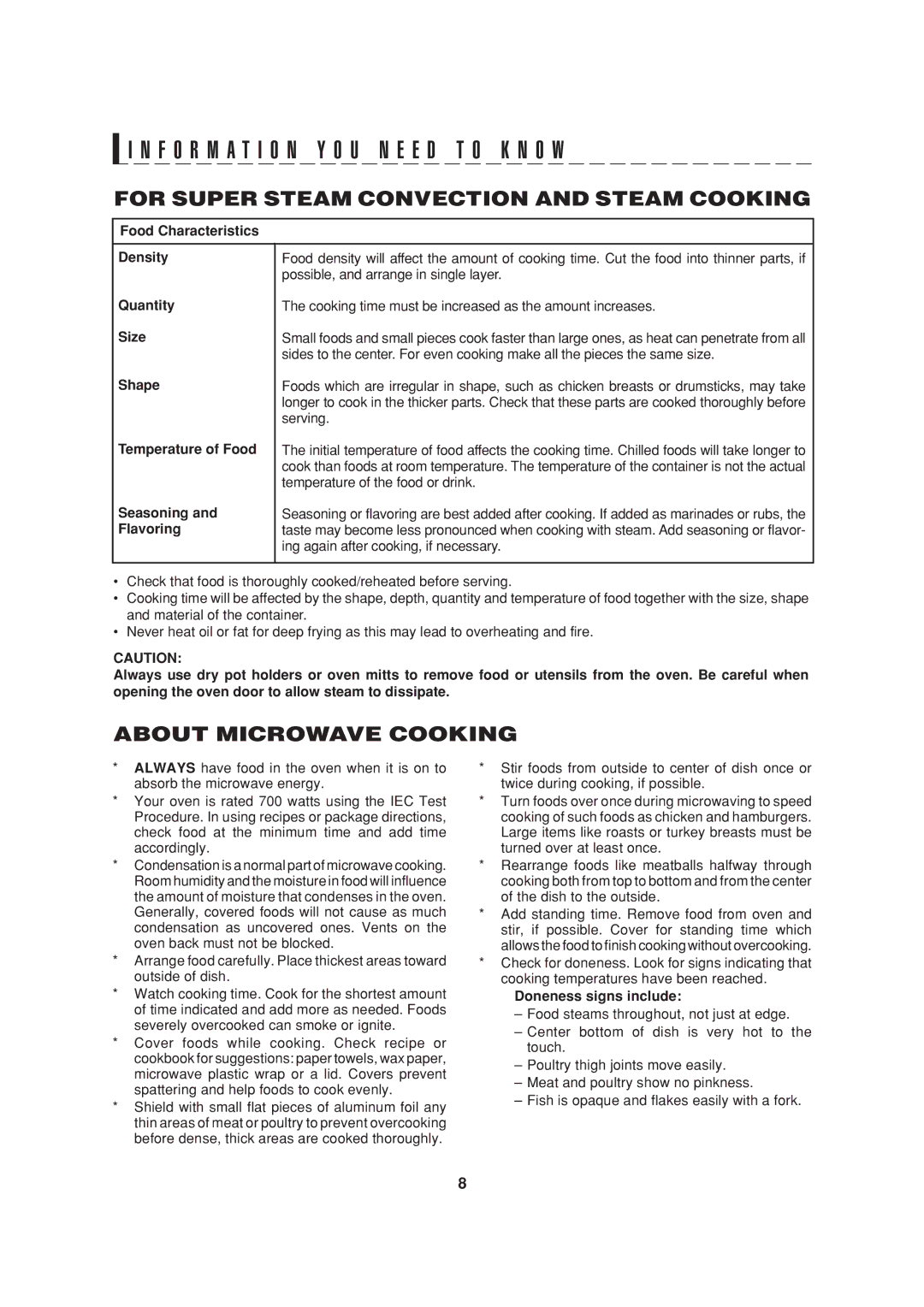AX-1200K, AX-1200 specifications
The Sharp AX-1200K and AX-1200S are sophisticated kitchen appliances designed to elevate the cooking experience through innovative technology and user-friendly features. Both models showcase Sharp's commitment to quality and efficiency, making them valuable additions to modern households.One of the standout features of the Sharp AX-1200 series is its versatile cooking modes, which include conventional baking, grilling, and even microwave options. This multifunctionality allows users to experiment with a variety of cooking techniques, whether preparing a quick meal or indulging in complex recipes. The AX-1200K is particularly praised for its advanced convection heating technology, which ensures even cooking and browning. This technology circulates hot air around the food, resulting in perfectly cooked meals with a crispy finish.
In terms of design, both models uphold a sleek and contemporary aesthetic. The stainless steel exterior not only enhances durability but also adds elegance to the kitchen. The intuitive control panel features easy-to-read LCD display, allowing users to navigate through settings effortlessly. For safety, the AX-1200 series includes child lock functions, ensuring peace of mind for families with young children.
Sharp’s commitment to energy efficiency is evident in the AX-1200 series, which boasts low energy consumption compared to traditional ovens. This makes them not only cost-effective but also an environmentally conscious choice for users looking to reduce their carbon footprint.
The AX-1200K and AX-1200S are also equipped with smart sensors that detect moisture levels in food, adjusting cooking times and temperatures accordingly. This feature helps prevent overcooking or undercooking, enhancing the overall culinary results. Additionally, the one-touch cooking buttons allow for quick access to commonly used settings, making meal preparation even more convenient.
With a capacity suitable for both small families and larger gatherings, the AX-1200 series can accommodate a wide range of dishes. Whether baking a cake, roasting vegetables, or reheating leftovers, these appliances perform exceptionally well across multiple cooking applications.
In conclusion, the Sharp AX-1200K and AX-1200S represent the perfect fusion of technology, design, and practicality. Their innovative features, efficient performance, and user-friendly interface make them an ideal choice for anyone looking to simplify and enhance their cooking experience in today's fast-paced world.

